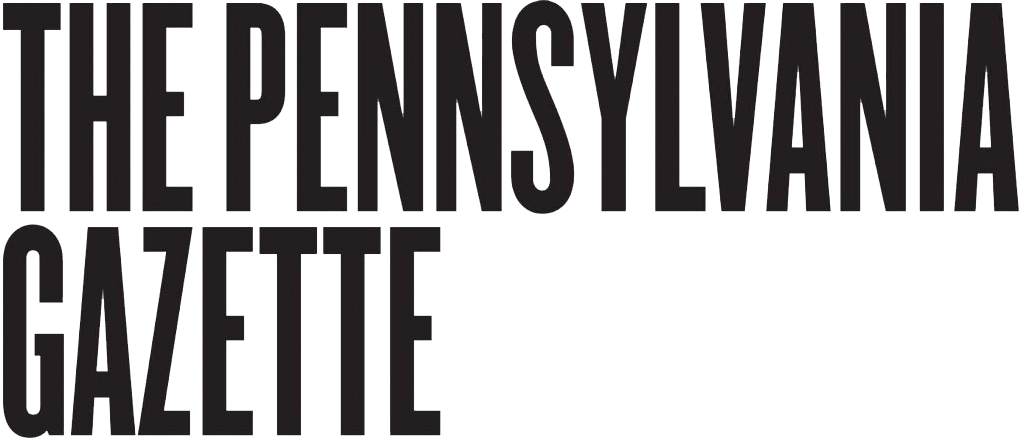Celebrating some recent successes, as a new year begins.
By Judith Rodin, CW’66
NEWTON’S LAWS TELL US that an object set in motion tends to stay in motion. The same, I think, is true of institutions. Like any good empiricist, I base my theory on observation. When I look across our University, I see a campus bustling with energy, activity, and a sense of purpose. Our academic programs are thriving; faculty achievement is extraordinary; the experience of our students has never been better; and Penn’s relationship with our surrounding community is strong. This momentum — Penn in motion — is in large part due to many recent, significant accomplishments. Those successes have energized this University and will keep us on the move throughout the year ahead.
In a year full of highlights, the greatest was the admission of the Class of 2002 — the most academically talented group of students to ever enter Penn. As you read this column, they are settling into campus life; their four years here will be among the most important in their lives. I am confident that this special class will benefit in innumerable ways from the successful work that preceded their arrival — accomplishments that have positioned the University for excellence on a number of important fronts.
Penn’s standing in the sciences, for example, was
greatly enhanced with the opening of the Roy & Diana Vagelos Laboratories
of the Institute for Advanced Science and Technology. A monument to the
vision and generosity of the building’s namesake — the chair of Penn’s
board of trustees and his wife — this new state-of-the-art facility is
a locus of transformative research in bioengineering, chemistry, chemical
engineering, and medicine. I hope you will visit the Vagelos Laboratories
when you return to Penn.
On your next visit to campus, you will also want to
see the most recent addition to the University’s landscape: our new bookstore.
Its two floors of sophisticated ambiance is simply spectacular. Anchoring
Sansom Common, the bookstore had a very successful opening in July, and
it will serve as an extremely important intellectual resource to our community
for years to come.
Even as we build anew, we continue to renovate and
restore our older, historic buildings. The restoration of Logan Hall is
complete; the fa�ade of College Hall has been restored to all of its Victorian
beauty; and the renovation of Houston Hall and Irvine Auditorium continues
apace. Together with a renovated Williams Hall, these four architectural
treasures will encompass the Perelman Quadrangle, the future center of
student life at Penn.
Some of the University’s most recent and innovative
accomplishments reached well beyond the center of campus. As I have previously
written in this space, Penn is working closely with our neighbors in West
Philadelphia to invigorate our surrounding community. To that end, UC
Brite has been completed, with more than 2,000 new fixtures lighting more
than 1,000 properties in University City. On its heels comes UC Green,
which will maintain and preserve parks and green space in the area. The
University City District, launched by Penn and other area institutions
last year, continues to advance the community’s goal of cleaner and safer
streets.
A recently unveiled housing-assistance program, which
includes generous financial incentives and loans for home improvement,
is encouraging more employees and faculty to purchase homes in West Philadelphia.
And in June, the University announced a partnership with the School District
of Philadelphia to build and administer an innovative public school just
west of Penn’s campus for grades pre-K through eight.
The net effect of these and other community-based initiatives?
A safer, stable, more vibrant neighborhood — and a stronger Penn.
The academic leadership of Penn has always been superlative,
and with the appointment of Dr. Samuel Preston as dean of the School of
Arts and Sciences, it just got better. An exceptional scholar, Dean Preston
is a champion of the humanities with an eye for talent: one of his first
official acts was to appoint Dr. Richard Beeman, a highly regarded Penn
scholar of early American history, to lead the College of Arts and Sciences.
With the support of Dr. Beeman and the guidance of his SAS colleagues,
Dean Preston will lead the school toward a bright and productive future.
Penn’s world-class faculty is at the very heart of
our mission, and they continue to draw the world’s attention to the University.
In the past year, Penn faculty members were elected to the National Academy
of Sciences; a Penn biologist was awarded a Guggenheim Fellowship; a Penn
historian received the Bancroft Prize for the best American history book;
a Penn microbiologist was appointed director of the Office of AIDS Research
at the National Institutes of Health. These and other accomplishments
reflect so very well on the University, and our community will continue
to draw tremendous strength from the intellectual vitality and accomplishments
of our faculty.
Penn’s exceptional faculty also play a critical role
in the University’s new College House system. The development of these
12 student-faculty communities is unquestionably the biggest news on the
student-life front at Penn. The College House initiative is transforming
the way the University delivers academic and co-curricular support to
our students, and it fosters opportunities for leadership development
— specifically within each House Council, where the defining character
of the residential community is shaped by the students who serve on it.
The accomplishments I have highlighted have done much
to strengthen our University’s already strong reputation. Penn is clearly
on the move — an institution set in motion by the hands of many thoughtful,
talented, and dedicated members of the University community. As we start
the new academic year, we can all take great pride in our recent successes.
At the same time, we should be eager to put Newton’s laws to the test.
I, for one, am very confident that they will hold, and that the momentum
we have generated will propel us through yet another year of excellence
and achievement.

